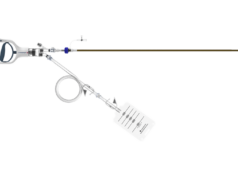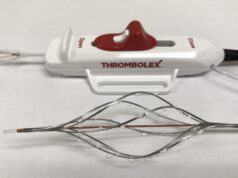 According to a recent study, longer segments of great saphenous vein (GSV) reflux appear to correlate with symptom severity. In addition, researchers noted a small to moderate correlation between length of GSV segment ablated and symptom improvement, which they state may reflect the greater severity of symptoms at baseline in patients who have longer segments with reflux. The diameter of the GSV, however, was found to have no correlation with baseline symptoms or improvement after ablation.
According to a recent study, longer segments of great saphenous vein (GSV) reflux appear to correlate with symptom severity. In addition, researchers noted a small to moderate correlation between length of GSV segment ablated and symptom improvement, which they state may reflect the greater severity of symptoms at baseline in patients who have longer segments with reflux. The diameter of the GSV, however, was found to have no correlation with baseline symptoms or improvement after ablation.
Robert R Attaran (Yale School of Medicine, New Haven, USA) and colleagues write in the Journal of Vascular Surgery: Venous and Lymphatic Disorders that they analysed data from a multicentre randomised controlled prospective study of 242 patients undergoing radiofrequency ablation (RFA) or cyanoacrylate closure (CAC) of the GSV.
The team measured Venous Clinical Severity Score (VCSS) at baseline and at one, three, six, 12, 24, and 36 months following ablation. In addition, they evaluated GSV diameter for correlation with VCSS at each time point.
Using the median treatment length value of 34cm, the investigators divided patients into group one (≥34cm) and group two (<34cm) for analysis.
Attaran et al report that there was no significant difference in VCSS—baseline and follow-up—between RFA and CAC. In addition, they relay that pooled data for all participants demonstrated a correlation between treated GSV length and pretreatment VCSS levels as well as delta-VCSS at 36 months (r=0.23; p<0.001).
Greater VCSS score improvement was seen in group one versus group two at up to 36-month follow-up (p=0.003), the authors add, noting that group one had higher VCSS (6.21±2.75 vs. 4.88±2.33; p<0.00001), Clinical-Etiological-Anatomical-Pathophysiological (CEAP), and reflux scores at baseline.
Furthermore, Attaran and colleagues relay that 101 patients had GSV diameters <5.5mm, vs. 141 with diameters ≥5.5cm. “No significant difference was noted in VCSS, either at baseline or at follow-up, between the two groups,” they write. Within the study population, the authors state that there was a “poor correlation” between GSV diameter and baseline VCSS (r=-0.004; p=0.95) as well as GSV diameter and the change in VCSS score up to 36 months (r=0.04; p=0.55).









